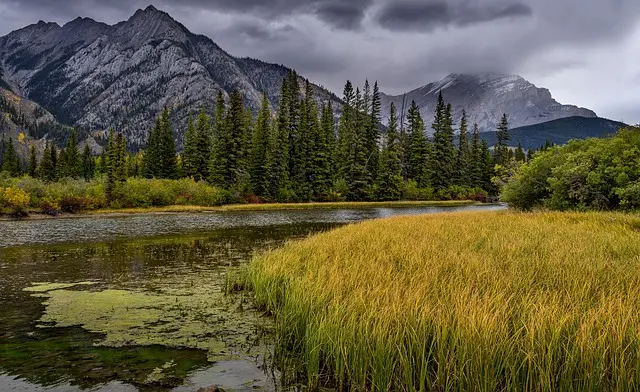
Western Canada
Edmonton, Alberta
Edmonton is the capital city of Alberta and home to the province’s Legislative Building. It is the northernmost large city in North America, with a population just over one million, making it the fifth-largest city in Canada. Compared to the other seven cities in this series, Edmonton is not a mainstream travel destination.
Edmonton’s two main attractions are the West Edmonton Mall, the largest indoor shopping mall in North America, and Fort Edmonton Park, Canada’s largest living history museum.
Travel Tips
Two days are sufficient to explore Edmonton.
Calgary, Alberta
Calgary, also in Alberta, has a population of over 1.2 million, ranking fourth in Canada. It is the largest city in the Canadian Midwest and a major transportation hub. While most visitors come to Calgary as a gateway to the Canadian Rockies, particularly Banff and Jasper National Parks, the city itself has its own attractions.
Key highlights include the Calgary Fort Park, the site of an early encampment of the Northwest Mounted Police, which later evolved into the famous Royal Canadian Mounted Police (RCMP).
Downtown Calgary features a long pedestrian street that showcases the city’s early commercial district and the Calgary Tower, a popular spot for panoramic views.
Travel Tips
As a gateway to the national parks, a day or half-day in Calgary is enough. Hotels are generally affordable, and staying near the airport offers quick access to downtown in about 15 minutes by car.
Canadian Rockies National Parks
About 130 km west of Calgary along the Trans-Canada Highway (Highway 1), you’ll reach Banff, a charming mountain town and the gateway to Banff National Park, the first national park in Canada. Alongside Banff, the Canadian Rockies are also home to Jasper National Park, known for its pristine wilderness.
Travel Tips
The journey from Banff to Jasper spans roughly 300 km, featuring numerous glaciers and scenic lakes along the way. Here are some suggested itineraries based on your time and preferences:
1. Short Trip: Calgary > Banff > Banff National Park, then return. (1–2 days)
2. Medium Trip: Calgary > Banff > Banff National Park > Jasper National Park > Jasper, then return. (2–3 days)
3. Extended Loop: Calgary > Banff > Banff National Park > Jasper National Park > Jasper > Edmonton > Red Deer > Calgary. (4–5 days)
4. One-Way Westward: Calgary > Banff > Banff National Park > Yoho National Park > Glacier National Park > Vancouver. (2–3 days)
This westward route (or its reverse) is a popular choice for tours starting in Vancouver.
Vancouver, British Columbia
Vancouver is the largest city in Western Canada, with a population of nearly 2.3 million, making it the third-largest city in the country. Thanks to the Pacific monsoon climate, Vancouver enjoys mild weather year-round, making it an ideal place to live. Many tourists visit Vancouver to board cruises to Alaska or join tours to the national parks of the Rockies.
Vancouver’s downtown is compact, and its main attractions are clustered together, making it easy to explore on foot or by public transit. Hop-on-hop-off bus tickets are another convenient option for sightseeing.
Start at Canada Place, an iconic Vancouver landmark and a hub for visitors. Don’t miss watching the seaplanes take off and land here—it’s a unique and entertaining experience.
From Canada Place, walk 10 minutes east to reach Gastown, Vancouver’s historic district known for its charming cobblestone streets and the famous Steam Clock.
From Canada Place, a 10-minute walk east takes you to Gastown, Vancouver’s oldest neighborhood. The Steam Clock, located at a street corner, is a must-see attraction for visitors. Gastown’s historic streets are also a great place to enjoy food and shop.
Just a short drive northwest of downtown lies Stanley Park, a vast urban forest park offering beautiful walking trails, beaches, and scenic views.
Heading 20 minutes southwest on foot, you’ll reach Granville Island, a lively hub with restaurants, shops, and an artisanal public market. It’s a favorite spot for locals to socialize. From here, you can also hop on a water taxi to explore Vancouver’s waterways.
Vancouver’s surrounding areas also feature some noteworthy destinations, though they require travel time. Highlights include Whistler Mountain, a world-class ski resort and former Winter Olympics venue, and the Capilano Suspension Bridge Park, where visitors can enjoy breathtaking forest and canyon views.
Travel Tips
Plan to spend 2–3 days in Vancouver. Accommodation in the city center can be pricey, so consider staying in Richmond and taking the SkyTrain’s Canada Line into the city.
Victoria, British Columbia
Surprisingly, the capital of British Columbia is not Vancouver but Victoria, located on the southern tip of Vancouver Island. With a population of approximately 340,000, Victoria is Canada’s twelfth-largest city. Vancouver Island itself is massive, and Victoria occupies only a small portion of its southern edge.
To reach Victoria from Vancouver, you can either take a ferry (about 1.5 hours) or a short seaplane ride (roughly 15 minutes).
Named after Queen Victoria, the city boasts architecture with a distinctly British charm. The island’s climate also resembles that of the UK, attracting many British immigrants.
Victoria’s downtown area is compact and can be explored in about two hours. Follow Canada’s Highway 1 (Trans-Canada Highway) to its southern terminus in Victoria, where you’ll find the Mile 0 marker. Nearby, the park features the world’s tallest free-standing totem pole and offers views of the snow-capped mountains in Washington State’s Olympic National Park, across the strait.
Travel Tips
Victoria is more suited for a relaxed vacation than a whirlwind sightseeing trip. A single day is enough to explore its main attractions, but you can easily spend a few more days unwinding.
Conclusion
Whether you’re planning a self-guided trip or joining a tour, this guide to Canada’s eight major cities offers helpful insights for your itinerary. Hopefully, it also introduces you to some destinations and experiences you weren’t aware of before. Enjoy your Canadian adventure!
